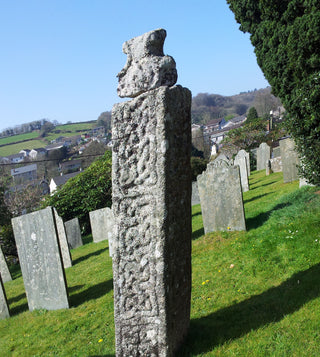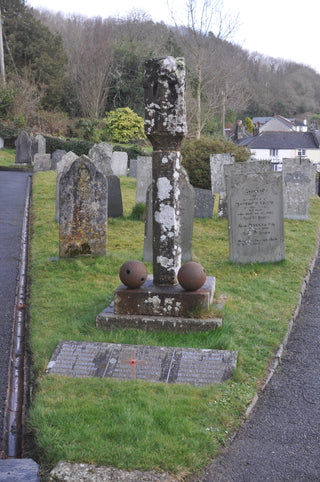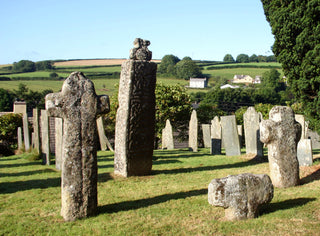Crosses

Saint Neot Cross
The tallest of the crosses with the damaged top is the"Saint Neot" cross thought to have been given by Prince Alfred (later to become King Alfred) who visited the Saint Neot here. The cross has been verified by Saxon experts as being contemporary with the era. Look at the knot work panel carved in its sides, the knots have no beginning and no end. Most of the other crosses are modern, some being medieval and others later in the 16th century.

Lantern Cross
The Lantern Cross here has been used as a war memorial to honour the soldiers and sailors from the village who died from fighting in the first world war (1914-1918). The two metal spherical balls at its base are considered by some to be “chain shoot”. This much travelled cross has been situated in many different places in its life, Trewarne Manor, Luxulyan, Helston and St Neot. It is cut from Cataclews Greenstone. It dates from the second half of the 15th century. It is mounted on a column of a particular form of decorative granite known as Luxulyanite.

Other Crosses
This image shows the small head of an old cross, all that is left of it. Many shafts were used as supports for farm gates! These crosses were removed from their original sites by the Rev Grylls in the 19th century so unfortunately, we don’t know where they came from as no records (if they were kept) remain. Two of the three (above and below) are Incised Latin crosses, they are Wayside crosses that once marked a Pilgrim’s Way or route to an Abbey. They are Medieval, i.e. 10th century onwards.
